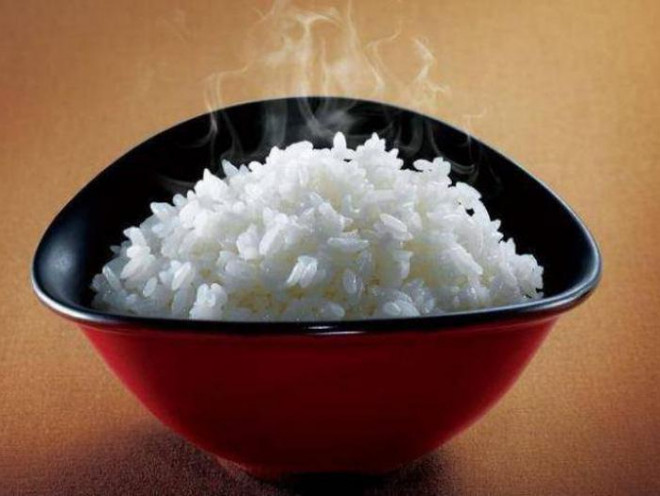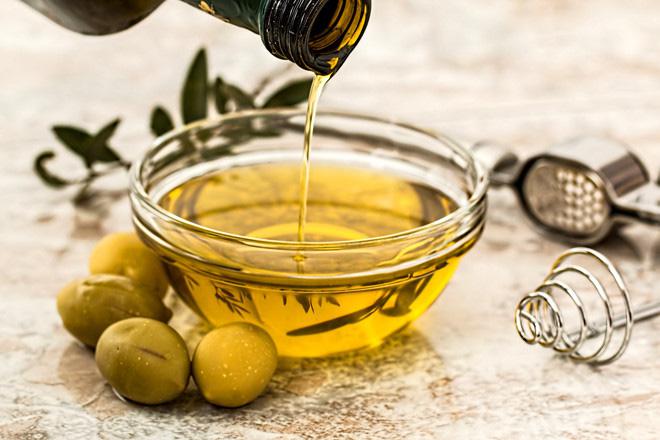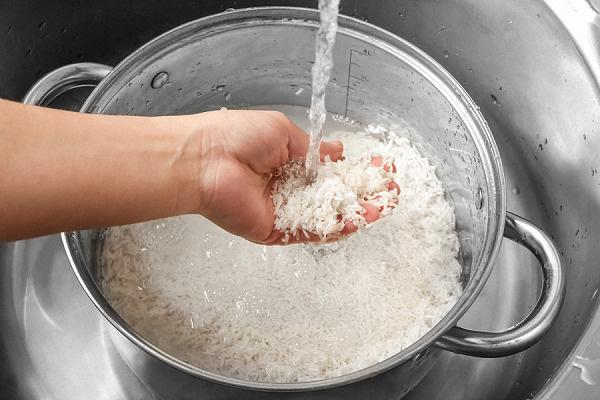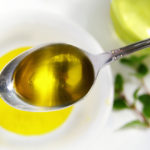
Add vinegar
Many people worry that adding vinegar to rice will make it sour, but in reality, just add 1 tablespoon. Vinegar will make the rice whiter and less sticky. In addition, vinegar will evaporate when the rice boils, ensuring that the rice is soft and extremely fragrant.
Add salt
A little salt will help remove the smell of rice if any, making the taste of the rice more delicate.

Add cooking oil
Adding a small amount of olive oil or sesame oil to the rice, then cooking it will make the rice shiny, soft, and even more delicious. This is the method that the Japanese people have used to create attractive bowls of rice. However, you should note that you should not add oil after the rice is cooked as it will make the rice greasy and the smell of oil will make the rice difficult to eat.
Add fresh milk
You can also cook rice with fresh milk to enhance the flavor of the rice. You add milk to the water at a ratio of 3:1, which means 3 parts water to 1 part milk, and then cook as usual. When the rice is cooked, you will smell the fragrance of the milk along with the aroma of the rice, and the rice grains will feel very soft when eaten. This method also helps to transform old rice into fresh rice.

Add 1-2 ice cubes
After soaking the rice, you add a few small ice cubes and let it stand for about 15 minutes, then start cooking as usual. The ice cubes will slow down the water absorption process of the rice, making the rice more sticky and delicious. At the same time, the ice increases the amount of amino acids and prevents the enzymatic degradation of sweet substances in the rice, helping the rice grains to retain their aroma and bring a better flavor.
In addition, you should also know the following tips before and after cooking rice:
Choose good rice
– First, to cook delicious rice, we need to choose clean, high-quality, in-season rice. Good rice means fresh rice, so choose rice according to the season. Do not buy rice that has been stored for a long time because it will lose nutrients, lose its natural sweetness, and lose the inherent aroma of rice.
– When choosing rice, you should choose rice with even, round, and shiny grains. Do not choose broken, rotten, or yellow or black rice as they are bad rice, stored for a long time. Do not choose rice that is too white or has a silvery belly color because it may be whitened or rubbed too hard, causing the outer layer of rice bran to be lost.
– Rice should have a gentle fragrance, with a faint fragrance and no musty or strange smell.
– You can taste the rice to know if it is good or not. Put a grain of rice in your mouth, chew it, if the rice has a slight sweet taste, you can feel the floury texture, and a pleasant aroma, then it is good rice.

Rinse rice properly
Although the rice is relatively clean, it is very important to rinse the rice before cooking. It helps to wash away dust and impurities mixed in the rice. However, this process also needs to be done with technique. Some people rub the rice very vigorously, and this is what will remove all the nutrients from the rice.
Vitamin B1 is mainly on the outside of the rice grain, if you rub the rice too hard when rinsing, the nutrients will be lost. The purpose of rinsing rice is to clean the outer layer of dust, but not “the cleaner, the better”. If you rub the rice too hard when rinsing, it will lose a lot of nutrients such as carbohydrates, proteins, lipids, minerals, vitamins B1, B2, B6, etc.
Therefore, we should only lightly rinse the rice to remove dust and impurities inside the rice grains.
Soak rice for 15 minutes
Most people have the habit of adding cold or boiling water immediately after rinsing the rice. This is incorrect and will make the rice grains not plump and shiny.
The correct way is to soak the rice in water for 15 minutes so that the rice grains absorb water, so that when cooked, the rice grains will be tender and plump. So, ladies, don’t forget this step when cooking rice!
Measure water when cooking
After rinsing the rice, pour water into the pot and measure how much water is enough. In the traditional way, use your index finger to touch the rice in the pot, the finger should just touch the rice and not sink deep into the bottom of the pot. If the water level reaches the first joint of your finger, it is enough, and the rice will not be dry or mushy. Or put your entire hand in, if the water level covers your hand, it is good. Note that you should only gently place your hand on the surface of the rice.
Stir the rice when cooked
When the rice is just cooked, open the pot, gently stir the rice with chopsticks for about 1 minute to let the steam escape, then cover the pot and let it sit for another 10 minutes.
Easy way to pluck duck feathers, no odor, dry, or dark after boiling
Take the time to soak the duck in cold water for a few minutes, then boil it, the duck meat will not be dry, but will be white and beautiful even when cooked ….
According to Family & Society
Tips on Selecting Healthy Cooking Oil and Safe Ways to Cook with It
A Taiwanese company has made a significant impact on the food industry through the recycling of over 700 tons of dirty oil, which has been exported to over 12 countries, including Vietnam. This has raised a few eyebrows among housewives, as cooking oil is an essential condiment in daily cooking. To ensure the safety and quality of their cooking oil, consumers should take note of the following advice.














